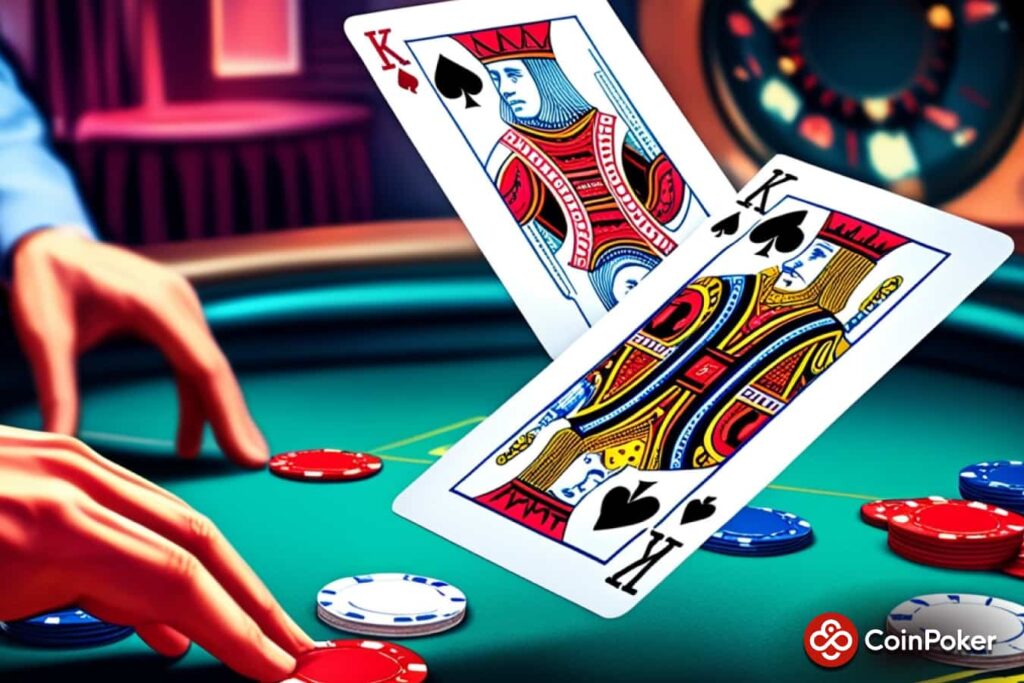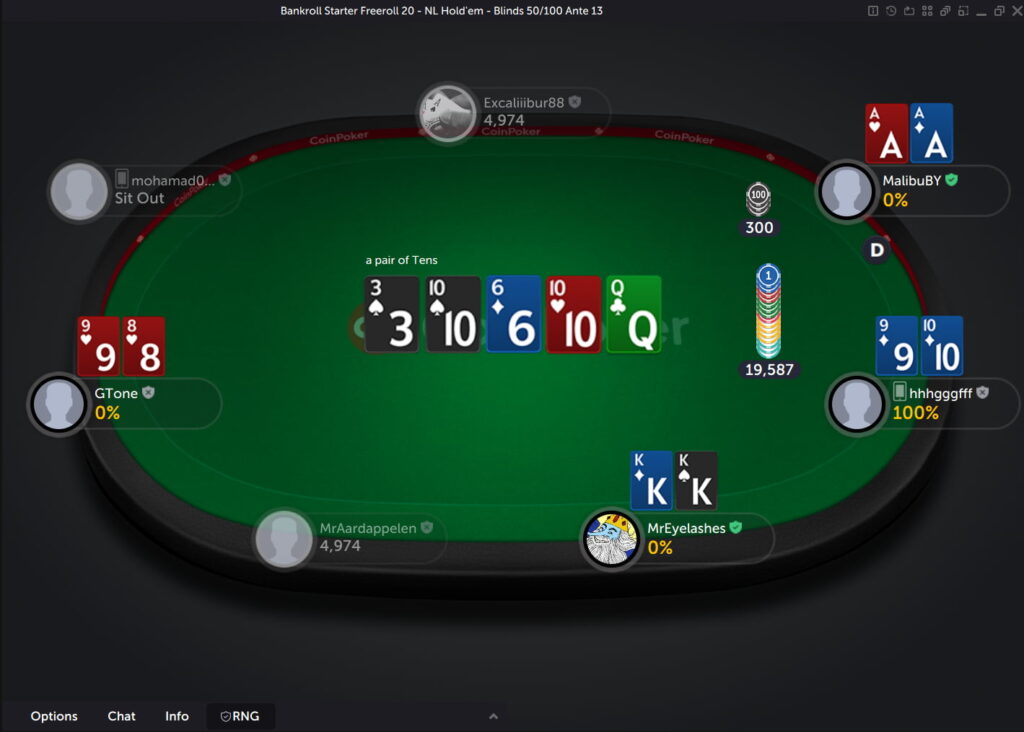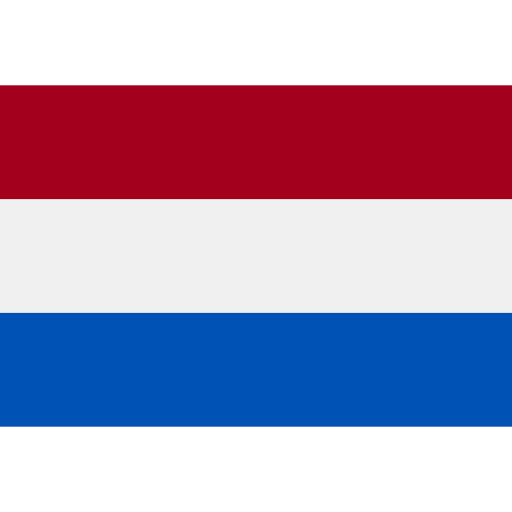Last Updated: 24 April 2025
Rake in Poker: Definition, Different Kinds, and How it Works
In poker, nothing comes completely free — not even the games. Most platforms take a small fee known as a rake — the cost of playing on a secure and well-run site. In this guide, we’ll break down what a rake in poker really is, explain the different types, and show you how to reduce ... Rake in Poker: Definition, Different Kinds, and How it Works
GuidesIn poker, nothing comes completely free — not even the games. Most platforms take a small fee known as a rake — the cost of playing on a secure and well-run site.
In this guide, we’ll break down what a rake in poker really is, explain the different types, and show you how to reduce your costs — or avoid them altogether. Yes, it’s possible to play poker with no rake at all.
What is a Rake in Poker?
A rake in poker is a small fee collected by the poker room to run games and turn a profit. In cash games, it’s usually a percentage of the pot. In tournaments, it’s a portion of the buy-in — often shown as something like $10 + $1, with the extra dollar being the rake.
Rake dates back to casino poker rooms in the 1970s, and nearly every online or live game includes it today. More players and bigger pots usually mean more rake.
So, what is a good rake in poker? Most players agree: the lower, the better. But rake isn’t just a fee — it’s an investment. It funds safe transactions, tournament guarantees, promotions, and fast software.
Smart players understand rake — and learn to work around it. That’s where the rest of this guide comes in.

Why Do Online Poker Sites Use Rake?
Poker sites don’t play against you — they just host the game. To generate revenue and maintain operations, they take a small rake from cash game pots and tournament entry fees.
So, what is the rake in poker used for? It supports the entire ecosystem — from tech to player rewards. Some platforms offer rakeback; at CoinPoker, our cashback program returns 33% of fees to players every week.
Here’s where the rake goes:
- Security: Encryption, fraud detection, and RNGs
- Software: UX upgrades, mobile apps, smoother gameplay
- Promotions: Bonuses, freerolls, leaderboards
- Tournaments: Guaranteed prize pools and overlays
- Marketing: Bringing in new players to keep games soft
It may sound like just a fee — but it’s what keeps your favorite games running.
Is Poker Rake Illegal?
Taking a rake means collecting a fee from each pot or tournament buy-in. Whether or not it’s legal depends on who’s doing it.
Legal: Licensed poker platforms that disclose their rake structure and are regulated by a gaming authority
Illegal: Unlicensed home games or underground clubs that collect money without any licensing or oversight
So, is taking a rake in poker illegal? The answer is, yes, it sometimes can be — but only when it’s done without proper regulation or oversight.
What Are the Different Types of Poker Rake?
Not all rake is created equal. Depending on what you play and where you play it, the method of rake collection can vary — and it can have a major impact on your bottom line.
From pot-based deductions to fixed-time fees, each format has its own pros and cons. Below, we break down the most common rake types — how they work, and what they mean for your win rate.
Pot Rake
With “pot rake,” a percentage of the pot is taken by the poker room, typically only after a flop is dealt. For example, in a $100 pot, a 5% rake removes $5, leaving $95 for the winner.
This is the most common structure in online poker. It’s straightforward, only applies to pots with action, and usually has a maximum cap to limit how much is taken.
| Advantages of Pot Rake | Disadvantages of Pot Rake |
| You only pay when you’re involved in a hand. | Larger pots mean more rake, even if capped — which can still add up. |
Dead Drop
A fixed amount is taken before the hand begins, typically paid by the player on the dealer button. For example, the button might pay $2 each hand, regardless of the pot size or outcome.
Dead drops are most common in live poker games. It’s simple and predictable, though some players find it unfair since the fee applies whether you play the hand or not.
| Advantages of Dead Drop | Disadvantages of Dead Drop |
| Predictable and easy to track. | You pay the same, whether you play the hand or not. |
Fixed Fee
Each player pays a flat participation fee, such as $10 per hour, regardless of how many hands they play.
This structure is popular in private or membership-based poker clubs. It offers great value to grinders but is less ideal for casual players who may only play a few hands.
| Advantages of Fixed Fee | Disadvantages of Fixed Fee |
| Ideal for high-volume players who grind long sessions. | You pay the same even if you only play a few hands. |
Time Collection
Instead of per-hand rake, a fixed amount (e.g., $10 per player) is collected every 30 or 60 minutes.
Time collection is mostly found in high-stakes live poker. It minimizes in-game interruptions and encourages fast, high-volume play — but doesn’t account for how active a player is.
| Advantages of Time Collection | Disadvantages of Time Collection |
| No in-hand interruptions or mid-pot deductions. | You pay the same, even if you barely play. |
Tournament Fees
A portion of the buy-in is designated as rake. For example, a $100 + $10 tournament means $100 goes to the prize pool, $10 to the house.
Tournament rake is universal across all poker platforms. It’s transparent, fixed, and paid upfront — meaning no surprises once the event begins.
| Advantages of Tournament Fees | Disadvantages of Tournament Fees |
| No in-hand interruptions or mid-pot deductions. | You pay the same, even if you barely play. |
Subscription Fee
A few poker sites offer a subscription-based model where players pay a monthly fee (e.g., $50) for unlimited access to rake-free games.
This model is rare but emerging in newer platforms and apps. It benefits frequent players who want to avoid traditional rake altogether.
| Advantages of Subscription Fees | Disadvantages of Subscription Fees |
| Flat and predictable cost. | Not ideal for low-volume or occasional players. |
Contributed Rake
Only players who put chips into the pot pay rake, and it’s split based on each player’s contribution.
Contributed rake is popular in online poker. It’s seen as fairer, especially for tight players, though it’s a bit more complex to track.
| Advantages of Contributed Rake | Disadvantages of Contributed Rake |
| You only pay based on actual contribution. | More complicated to calculate and track. |
Player Value Index Rake (PVI)
Rake is adjusted based on a player’s profile, including play style, win rate, and volume. For example, a casual player might pay less rake than a high-volume regular, even in identical spots.
PVI is mostly used on recreational-focused poker sites. It’s intended to protect new players, but many grinders dislike the lack of transparency.
| Advantages of Contributed Rake | Disadvantages of Contributed Rake |
| Can protect newer or recreational players from high rake. | Lacks transparency and penalizes winning players. |
Does CoinPoker Have Rake?
CoinPoker doesn’t use the term “rake” and calls poker fees “Community Contributions” instead. Functionally, it’s the same — a small fee taken from each pot or tournament buy-in.
Here’s how it works:
- Cash games: 5% rake with caps based on stakes and table size
- Tournaments: 8% fee built into the buy-in
The difference? CoinPoker returns 33% of that money to players every Monday as cashback — our version of rakeback. To qualify, you just need to hold our native token, CHP, in your account.
CoinPoker’s rake structure is transparent, and the cashback is automatic — no need to opt in. If you’re a volume player, this setup can significantly reduce your long-term costs.

Let’s Compare: Online Poker Rake vs Live Poker Rake
Rake is a universal part of poker — but the way it’s applied can vary dramatically depending on whether you’re playing online or live.
Online poker tends to be more transparent, faster, and rake-capped, while live games often come with higher average costs and fewer benefits in return. Here’s how the two compare:
| Factor | Online Poker | Live Poker |
| Rake Type | Mostly pot-based with strict caps | Pot rake, time rake, or fixed fees |
| Average Rake % | 3%–5%, often capped | 5%–10%, sometimes uncapped |
| Hands per Hour | 60–100 | 20–30 |
| Rakeback / Rewards | Common (e.g. CoinPoker cashback) | Rare or nonexistent |
| Transparency | Clearly shown in settings/tables | Often less transparent in live rooms |
What Type of Rake is Best for Poker Players?
Not all rake systems are created equal — and what works best depends on your playstyle, stakes, and volume. Here’s a quick breakdown:
For Casual Players
If you play a few times a week or stick to lower stakes, capped pot rake is ideal. You only pay when you’re in a hand, and rake stays within a predictable range.
For Volume Players
If you grind daily or play higher stakes, a contributed rake system paired with cashback is best. You’ll recover more of what you pay simply by showing up consistently.
CoinPoker’s structure checks both boxes:
- Transparent 5% cap on cash game rake
- 8% fee baked into tournament buy-ins
- 33% weekly cashback for CHP holders
Ultimately, the best rake system is transparent, capped, and gives you something in return. Rake isn’t going away — but you can absolutely choose how much it costs you.
What Poker Games Have Low Rake?
Looking for poker games with low rake? Some formats offer better value, especially if you’re just getting started or grinding on the regular.
- Freerolls – No rake at all. Ideal for practice and growing your bankroll.
- Large-field MTTs – More players = Higher payouts vs. rake requirements.
- Low-stakes cash games – Smaller pots, smaller rake caps.
CoinPoker offers all three.

How to Pay Less Rake in Poker
Experienced players don’t just win pots — they win margins. By managing how much rake they pay (and how much they get back), they stay profitable over the long run.
Want to do the same? Let’s look at how rakeback and bonuses can help you pay less rake — and keep more winnings.
Rakeback
Rakeback is exactly what it sounds like — a percentage of the rake you’ve paid that’s returned to you.
It’s a popular reward system used by many poker sites to give loyal or high-volume players a financial boost. The more you play, the more you’ll get back. Some platforms use tiered rewards or point systems, while others return a flat percentage.
At CoinPoker, rakeback is called cashback. Every Monday, players who hold CHP (CoinPoker’s native token) receive 33% of their Community Contributions — no forms, no opt-ins, no delay. It’s all automatic.
If you play regularly, rakeback is one of the easiest ways to boost your profits.
Bonuses
Welcome bonuses, reloads, and milestone rewards can all add value to your sessions — especially if they’re tied to your rake or play volume.They don’t technically reduce rake, but they give you more return for every dollar (or chip) you spend.
For example, a site might offer a $100 bonus that unlocks as you generate $200 in rake. While you still pay the rake, that bonus works out to a 50% rake refund.
CoinPoker’s welcome bonus works this way. It’s released in stages as you accumulate Community Contributions, so the more you play, the more of the bonus you unlock.
Even if you’re not a grinder, bonuses can provide strong short-term value — particularly when starting out. Combine them with cashback, and you’ve got a strong strategy for improving you winnings.
Find Tournament and Cash Games with Low Rake
Choosing the right games is one of the easiest ways to pay less rake in poker — and it’s often overlooked. Not all games are equal when it comes to fees.
At CoinPoker, cash games have capped Community Contributions, which means you won’t overpay when pots get large. Tournaments also offer excellent value, especially when you enter freerolls or centrolls (low-cost entries with competitive prize pools).
Here’s what to look for:
- Tournaments with high prize pools relative to buy-ins
- Cash games with capped rake or transparent contribution rates
- Promotions that reduce or rebate entry fees
- Game types like freerolls with no rake at all
Smart game selection lets you stretch your bankroll and stack the odds in your favor. Before you sit down at a table, check the rake structure — and look for value in how, when, and where you play.
Can You Play Poker with No Rake?
You can play poker without rake — but it’s rare.
Online poker freerolls are the most obvious option. These tournaments have no entry fee and no rake, but still offer real prizes. CoinPoker runs multiple freerolls every day — perfect for beginners or players trying to build a bankroll from scratch.
You’ll also find play money games, which involve no real stakes or rake. Some apps and crypto sites run occasional no-rake promotions, often as a marketing tool.
But be careful: sites that claim to run entirely without rake usually don’t last. Rake helps pay for secure gameplay, tournament guarantees, and support. Without it, most platforms can’t stay profitable. So while rakeless poker exists, it’s often unstable or unsustainable.
Start Collecting Cashback from Poker Here
Rake is part of the game — but at CoinPoker, it doesn’t have to eat into your profits. Thanks to our 33% weekly cashback, you get rewarded for every hand you play.
Just hold CHP tokens in your account, and you’ll automatically earn cashback on your Community Contributions. It’s simple, consistent, and built directly into our platform — no hoops, no codes, no grind.
Create your account now and join thousands of players who are already turning their rake into real value.
FAQs
It’s the fee a poker room takes from pots or buy-ins.
It means collecting a fee during hands — usually by the house.
Only when done outside of licensed or regulated environments.
Low, capped rake with cashback or bonuses is best. Ideally 5% per hand for cash games and 10% of the original buy-in for tournaments.
You can find rake-free games in freerolls, play money tables, and some promotional events.
Explore More
Announcements
Read recent announcements from CoinPoker about new games, ambassadors, and changes to our platform.
8 PostsGuides
The go-to resource for mastering poker with expert tips and strategies. Whether you're a beginner or a pro, our guides will elevate your skill level.
46 PostsNews
Find the latest poker news from CoinPoker, plus our latest CoinPoker Weekly and Monthly Newsletters. Updates about games, promotions and other exciting crypto news.
79 PostsPromotions
Find the latest coinpoker promotions here. Explore the crypto poker world with the best poker promotions available.
1 Post















